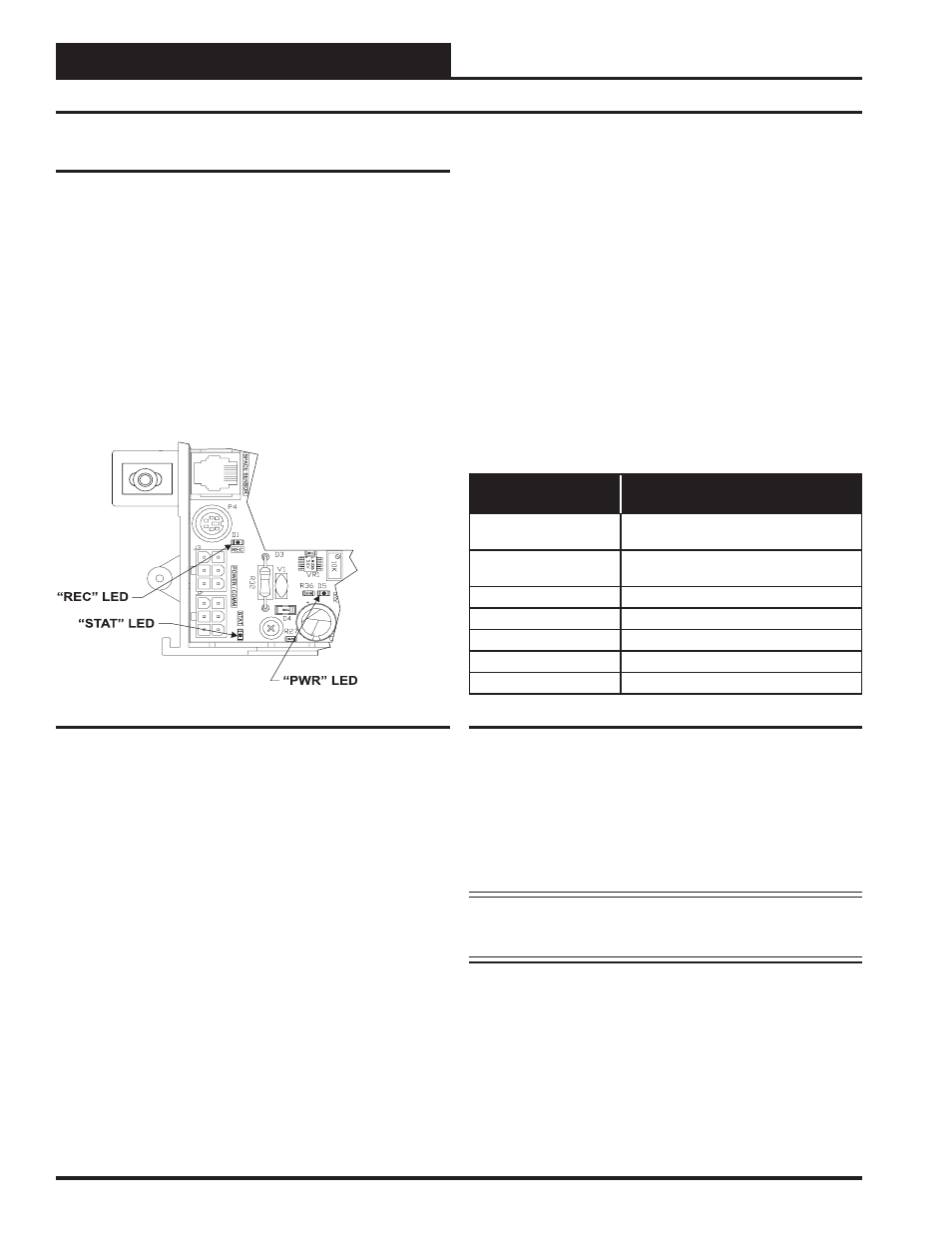Led troubleshooting, Using leds to verify operation, Troubleshooting – Orion System Modular VAV/Zone Controller User Manual
Page 28: 28 modular zcap technical guide

LED Troubleshooting
Using LEDs To Verify Operation
The VAV/Zone Controller is equipped with LEDs that can be used as
very powerful troubleshooting tools. The VAV/Zone Controller board
has three LEDs. Two of these LEDs are used in troubleshooting. See
Figure 19 for the LED locations. The LEDs and their uses are as follows:
“REC”
This LED will light up to indicate system communications.
“PWR”
This LED will light up to indicate that 24 VAC power has been applied
to the controller.
“STAT”
This is the diagnostic blink code LED. It will light up and blink out
diagnostic codes.
Figure 19: LED Locations
“REC” LED Operations
When the controller is communicating, this LED will flicker. If it does
not flicker, check the MiniLink PD and/or CommLink that is connected
to the Power/Comm board which connects to your VAV/Zone Control-
ler and make sure the MiniLink and/or CommLink is powered up and
properly connected to the Power/Comm board.
“PWR” LED Operations
When the VAV/Zone Controller is powered up, the “PWR” LED should
light up and stay on continuously. If it does not light up, check to be sure
that the modular connector is connected to the board, that the connec-
tions are tight, and the tab is locked on the connector. Be sure power is
connected and turned on to the Power/Comm board and that the modular
cable connector is securely connected. If after making all these checks
the “PWR” LED does not light up, the board is probably defective.
“STAT” LED Operations
As previously described, when the board is first powered up, the LED
will do the following:
•
Flashes Once
•
Off for 5 seconds
•
STAT LED blinks the board address
(Address 14 = 14 blinks)
•
5 second pause
•
20 second time delay - LED blinks 20 times
•
LED blinks slowly as damper moves towards the open
position. The LED blinks fast as the damper moves
towards the closed position.
After the above steps, the status code is repeatedly blinked every 10
seconds to indicate controller status. The status blink codes are listed in
Table 3 below in order of priority with 7 being the highest priority.
LED Blinks This
Number of Times
Blink Code Description
1
Normal Operation.
No Alarm Conditions Exist
2
Push-button Override or
Group Override Is Active
3
Communications Failure
4
Bad Airflow Sensor
5
Bad Or Missing Space Sensor
6
Damper Open or Close Failure
7
Damper Feedback Failure
Table 3: “STAT” LED Blink Codes
Only the highest priority failure code will be shown. You must correct
the highest priority alarm before other problems will be indicated.
If the “STAT” LED does not operate as indicated above, first check the
address switch setting. See Figure 17 for correct address switch setting
procedures. If the address switch setting is correct and the “STAT”
LED still does not behave as indicated above, contact Orion Controls
Technical support.
Note:
Power to the controller being addressed must always be
cycled after changing address switch settings in order for
the changes to take effect.
28
Modular ZCAP Technical Guide
Troubleshooting
